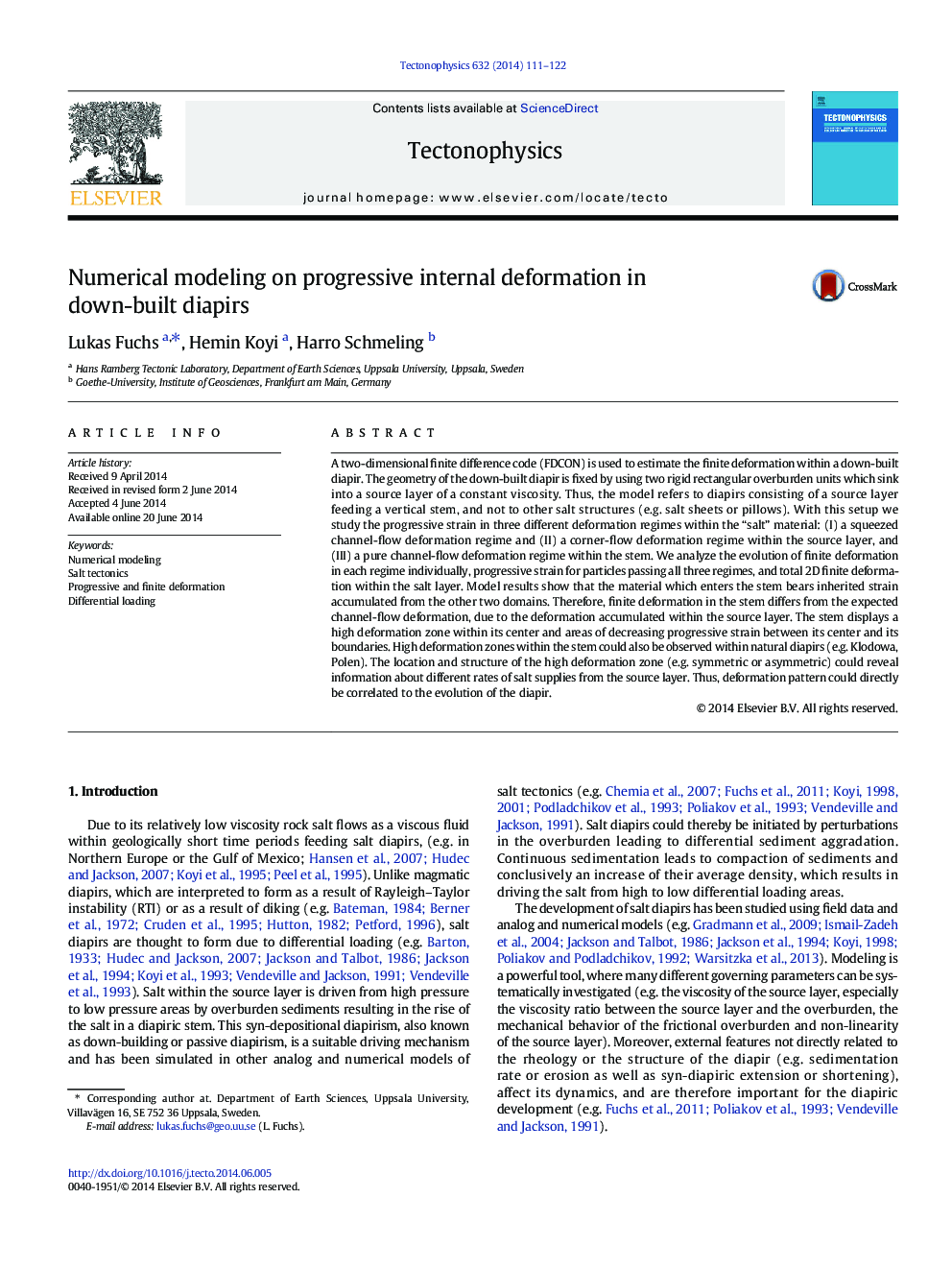| کد مقاله | کد نشریه | سال انتشار | مقاله انگلیسی | نسخه تمام متن |
|---|---|---|---|---|
| 4691853 | 1636759 | 2014 | 12 صفحه PDF | دانلود رایگان |
• Detailed analysis on progressive deformation in down-built salt diapirs
• Identification of three distinct deformation regimes in a down-built diapir
• Strong influence of inherited strain from the source layer on progressive deformation in the stem
• Inference of the history and development of a down-built diapir from its deformation pattern
A two-dimensional finite difference code (FDCON) is used to estimate the finite deformation within a down-built diapir. The geometry of the down-built diapir is fixed by using two rigid rectangular overburden units which sink into a source layer of a constant viscosity. Thus, the model refers to diapirs consisting of a source layer feeding a vertical stem, and not to other salt structures (e.g. salt sheets or pillows). With this setup we study the progressive strain in three different deformation regimes within the “salt” material: (I) a squeezed channel-flow deformation regime and (II) a corner-flow deformation regime within the source layer, and (III) a pure channel-flow deformation regime within the stem. We analyze the evolution of finite deformation in each regime individually, progressive strain for particles passing all three regimes, and total 2D finite deformation within the salt layer. Model results show that the material which enters the stem bears inherited strain accumulated from the other two domains. Therefore, finite deformation in the stem differs from the expected channel-flow deformation, due to the deformation accumulated within the source layer. The stem displays a high deformation zone within its center and areas of decreasing progressive strain between its center and its boundaries. High deformation zones within the stem could also be observed within natural diapirs (e.g. Klodowa, Polen). The location and structure of the high deformation zone (e.g. symmetric or asymmetric) could reveal information about different rates of salt supplies from the source layer. Thus, deformation pattern could directly be correlated to the evolution of the diapir.
Journal: Tectonophysics - Volume 632, 29 September 2014, Pages 111–122
